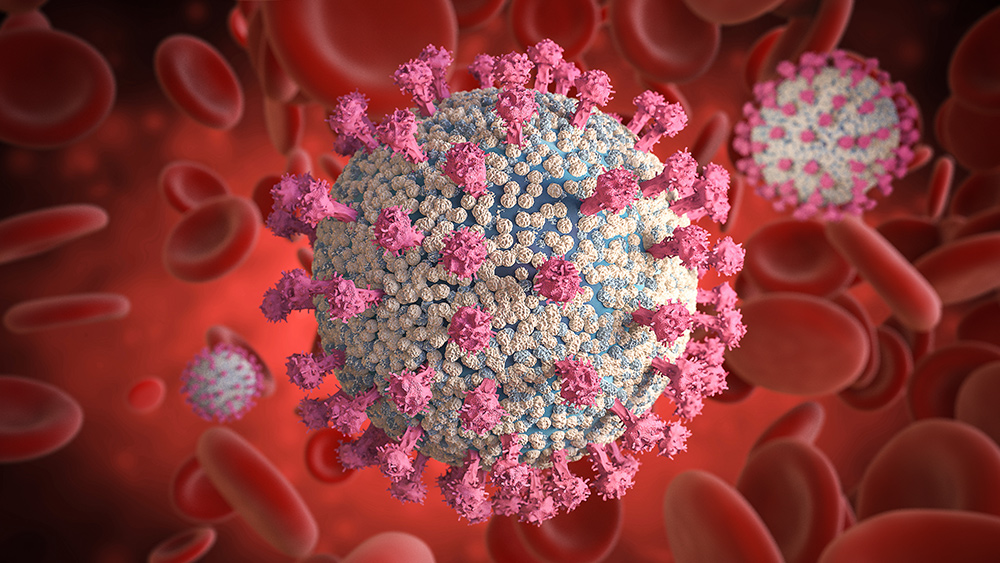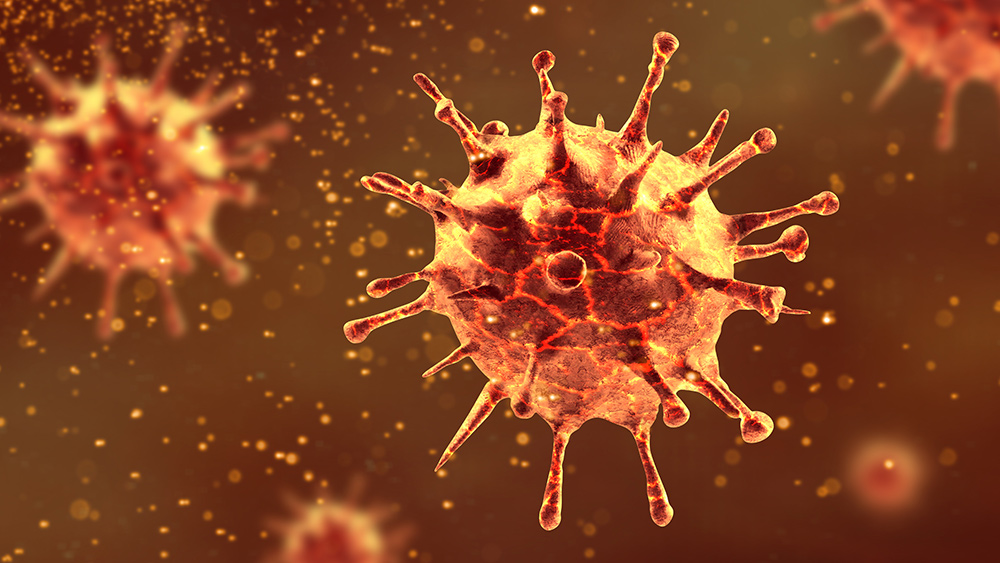
University of Pennsylvania researchers reveal that acute viral infection cells enriched with defective viral genomes are more likely to survive infection than cells with full-length viral genomes.
Viral infections, such as parainfluenza, Ebola, measles, and respiratory syncytial virus (RSV) are considered acute viruses because they immediately cause disease to their host and then leave their host after a period of time. However, researchers have found that the infection, and the very presence of the virus itself, can linger within the host.
For instance, RSV can result in chronic respiratory issues, measles can develop into encephalitis or inflammation of the brain tissue, and Ebola can pass from patients who were long since thought to already be cured of the virus. (Related: Ebola virus survives for two years in the semen of infection survivors.)
The researchers have discovered that by-products of viral infections called defective viral genomes (DVGs), which are involved in triggering an immune response, can also pave a molecular pathway that resuscitates infected cells. This is most likely the mechanism for how you have a "relapse."
“One of the things the field has known for a long time is that DVGs promote persistent infections in tissue culture. But the question was, how do you reconcile that with the fact that they're also very immunostimulatory? How can they help clear virus at the same time as they promote persistence? Our work helps explain this apparent paradox,” University of Pennsylvania's School of Veterinary Medicine associate professor of microbiology and immunology Carolina B. Lopez says.
Lopez, who is senior author of the study that is published in Nature Communications, worked with co-lead authors and laboratory members Yan Sun and Jie Xu, plus fellow co-authors Daniel Beiting and Gordon Ruthel of Penn Vet, Susan R. Weiss and Yize Li of Penn's Perelman School of Medicine, and Arjun Raj of the School of Engineering and Applied Science.
DVGs, which Lopez had concentrated on for years, are manufactured in infected cells when a virus starts to reproduce at a fast rate, resulting in defective versions of itself that have large deletions. DVGs, which were once thought to not have any biological function whatsoever, are now considered important components of viral infections.
Lopez and the team have utilized a scientific process that made it possible for them to differentiate full-length genomes from the partial genomes of DVGs at the single-cell level. They analyzed cultured cells that were infected with the Sendai virus, which often causes disease in infants and can often lead to chronic respiratory problems.
The researchers labeled the full-length genomes in red and the partial DVGs in green. Some cells contained minimal number of DVGs, while others were full of DVGs, with only a minimum number of full-length genomes.
“We saw this in many different cell lines and even in infected lungs in mice. We hadn't appreciated before that there is a lot of heterogeneity in what is going on with these DVGs,” Lopez says.
The researchers next wanted to know what kind of molecular pathways might cause DVG-rich cells to survive apoptosis. A study of highly-expressed genes in DVG-rich cells in comparison with full-length viral genome cells showed that a host of pro-survival genes were activated in the DVG-rich cells.
These genes have signaling proteins of the TNF (tumor necrosis factor) pathway, known to increase immunity and cell survival, and IFN (inferon) pathway, which is important in antiviral immunity.
Finally, Lopez and her colleagues have found that signaling through the proteins MAVS (mitochondrial antiviral-signaling protein) and TNF receptor 2 shelters infected cells against the dangers of apoptosis that is otherwise stimulated by TNF.
“MAVS is engaged during the antiviral response, and only cells that have a lot of DVGs activate this pathway. These show that our cells are wired to survive if they are engaged in an antiviral response, explaining the paradoxical functions of DVGs. It seems that in order to persist, the virus is taking advantage of these host pathways that are there to promote the survival of cells working to eliminate the virus.”
“I want to see if there's a way we can harness this pathway to minimize and avoid the persistence of these viruses, which is really relevant if we think about the chronic diseases associated with some of these respiratory viruses,” Lopez says.
This is not the only recorded instance when viruses have been able to get past the immune system. A new study that was published in Immunity during the third week of October and which was conducted by researchers from the Perelman School of Medicine at the University of Pennsylvania showed that noroviruses can escape the immune system by hiding out in a special type of cell in the gut.
Read up on more stories such as this one at Scientific.news.
Sources include:
Please contact us for more information.























